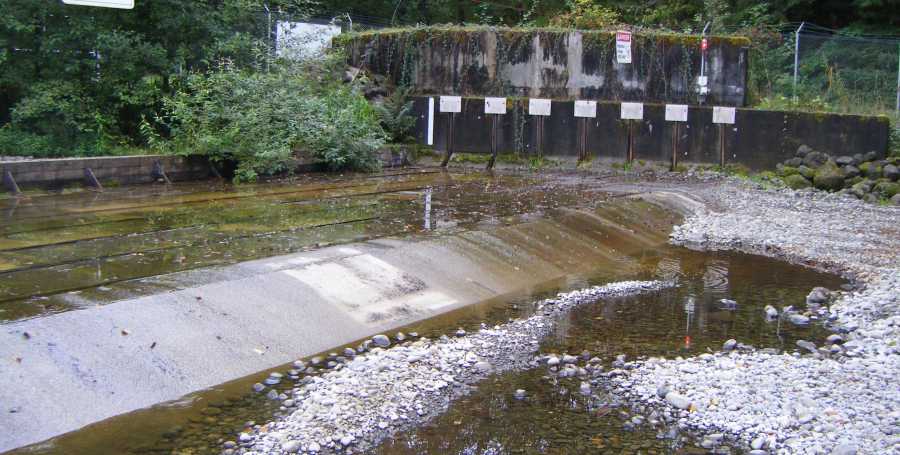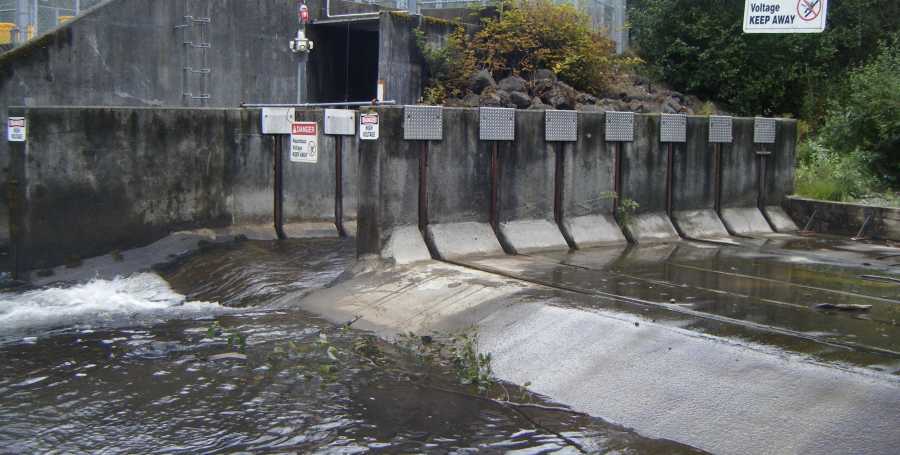Quinault National Fish Hatchery
Smith-Root provided biological and electronic expertise to divert migrating steelhead, chinook and coho into the adjacent hatchery for sorting and egg production.- Location: Humptulips, Washington
- Commissioned: 2003
- Type: Waterway
Project description
Cook Creek is a tributary to the Quinault River, which runs west from Quinault Lake and the Olympic Peninsula rain forest. The Cook Creek hatchery produces salmon and steelhead. Like many of these streams, the creek experiences highly variable flows. In flood conditions, it carries considerable bedload.
On the site of an existing weir, Smith-Root designed a new electric barrier to divert all migrating species into a bypass to the hatchery for sorting and egg collection. The weir contains a main deck and a smaller low flow section. There are seven steel rail electrodes embedded into the Insulcrete™ decks and side walls.
The barrier works well to divert the fish. There has been considerable maintenance associated with the bedload. It has also been found that the orientation of the original weir and the barrier is not consistent with the now existing stream flow, resulting in uneven water depth at low flows. Smith-Root continues to work with U.S. Fish and Wildlife on these issues.
Services provided
- Coordination with U.S. Fish and Wildlife Service and the hatchery staff
- Design and detailing of the barrier
- Supply of the electronics to power the barrier
- Limited observations during construction
- Complete annual maintenance
Site characteristics
- Pulsators: 1.5kVA POW
- Pulsator Qty: 6
- Power Output: 9.0 kW max.
- Water Depth: 0-6 feet
- Waterway Width: 103 feet
- Water Velocity: 0-3 ft./s
- Conductivity: 70 µs/cm max.


